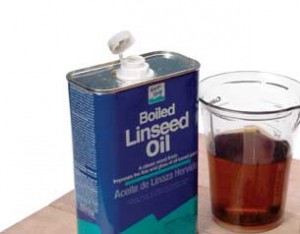There are two basic processes used to manufacture hardboard: the wet method and the dry method. They both start out the same way; the wood is chipped and then broken down into raw fiber by steaming and grinding. The fibers are put back together with the fibers rearranged lying in either two dimensions parallel to the surfaces or three-dimensional with some parallel and some perpendicular. All hardboard goes through these steps. The end result is two different types of hardboard. One has two finished sides and the other only has one side finished, but I’m getting ahead of myself. 
The single-sided hardboard originally invented by Mason had one smooth side. The other side is rough and has a regular pattern embedded in it. In this process, known as the Wet Process, the ground wood fibers are mixed in water slurry. This is put on screens in a uniform mat, and the excess water drains through the screens. Then the screens go into a press that applies many tons of pressure to squeeze out the rest of the water and heats the fiber to a temperature of 350 degrees Fahrenheit. The combination of heat and pressure causes a chemical reaction of the lignin that bonds the wood fibers into hardboard. When it is removed from the press, the screen is removed, leaving the impression on the rear side. In the alternate process, known as the Wet-Dry Process invented later by Mason, the thin mat of fiber is not put on a screen but is sent into a tunnel dryer to evaporate the excess water before going to press. It results in hardboard with two smooth sides. Both wet processes result in two-dimensional fiber layers.
In the Dry Process, the wood fibers are air-dried by tumbling in a rotating drum dryer basically like your clothes dryer at home. The fibers are then blown into “forms” in a layer that can be several inches thick, where it is then pressed down to 1/8” or ¼” hardboard. The heating in this process must be higher than the wet process to cause chemical changes to the lignin, and can get to 400 degrees. This process results in three-dimensional fiber layering.
After pressing, both types of  hardboard are then “tempered.” Most commonly, the panels are flooded with linseed oil, excess oil is pressed off, and the board dried in a hot air oven. At this point, the hardboard is at 0-1 percent moisture, so has to be sent through another oven which is injected with moist air to bring the moisture content up to normal relative humidity. After that, it is ready to go.
hardboard are then “tempered.” Most commonly, the panels are flooded with linseed oil, excess oil is pressed off, and the board dried in a hot air oven. At this point, the hardboard is at 0-1 percent moisture, so has to be sent through another oven which is injected with moist air to bring the moisture content up to normal relative humidity. After that, it is ready to go.
As you can see, hardboard is truly a natural product; it consists of wood, water, and linseed oil. Actually, this is basically what distinguishes it from Medium Density Fiberboard (MDF). MDF is manufactured in almost the same way as hardboard but uses chemicals rather than heat to bond the wood fibers. MDF uses the same dry process as some hardboard, but a synthetic resin is added when the boards are pressed in order to bond the fibers and high heat is not applied. Without the high heat, MDF comes out of the press at 4 to 6 percent moisture. With the savings in energy to produce heat, and to eliminate the re-moisturizing step, MDF is less expensive to manufacture than hardboard. Since MDF does not rely on extremely high pressures to its inner structure, it can be produced in much thicker sheets than hardboard. Next time, I’ll point out the different qualities of each type of hardboard that you need to know before you use it in a project.
Tim Knight





